Digital panel meter - Voltmeter / Ammeter - made in China.
Hello, my dear electrode colleagues.
Today I decided to present you a cheap Chinese voltmeter and ammeter, in one neat panel housing. The purchase cost is about PLN 6

I decided to take this step due to the fact that in a certain thread on the forum, there is a discussion about the accuracy of measurements of this type of meters. Gentlemen, they are shouting over each other with arguments, but somehow no one has checked the reality. Even if he did, he didn't show the results.
Let's start with what the manufacturer says, because we must have a reference point.
1. Of course, "high quality" is in the first place .
.
2. Next, this - let's call it conventionally and for the purposes of this article - "multimeter" prides itself on measuring voltage in the range of 0-100V DC.
3. The ammeter should indicate correctly in the range of 1-10A, which the seller clearly indicates and asks not to leave negative reviews due to inaccuracies in the range of less than one Ampere.
The fact that the ammeter is already activated at 0.01A, but its indications in the range of up to one Ampere do not match the "real" ammeter. However, in the case of my copy, the indications above one Ampere were also not very accurate.
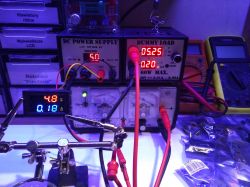

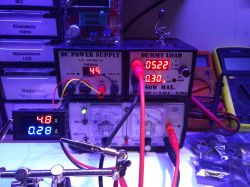
Sequentially 200mA; 250mA and 300mA. As you can see, it lies on average by 20mA

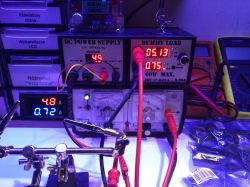

Now 500mA; 750mA and 1000mA. We can see that it distorts even more, because in the first two cases by 0.03A and in the last one even by 0.04A.
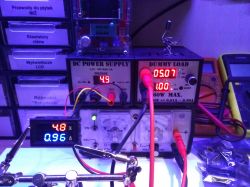
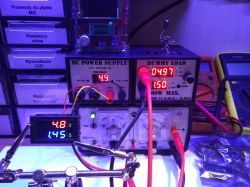

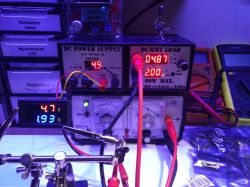
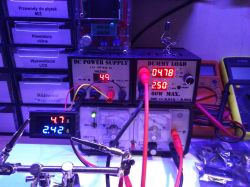

As you can see, at higher currents it is better, but still not very precise.

It's just that this is the state after taking it out of the package, and yet we have two tiny "peers" for REGULATION.
After that, it turns out that in the lower ranges it can be quite accurate
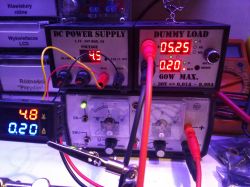
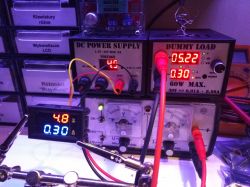
I noticed that a large number of users have problems connecting this device.
It is actually very simple. Just take a look at the diagram below.
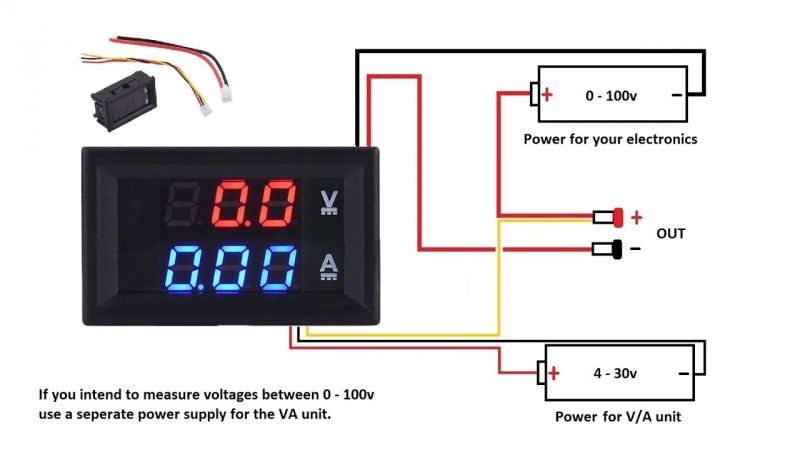
Image source
The voltmeter has the advantage that it can be powered from the measured voltage, if it is not lower than 4V. If you want to measure lower voltages, you should supply power from an external source, for example a 6F22 battery (a bad idea in the case of two, even small LED displays) or a power supply e.g.. plug 5-30VDC with a minimum capacity of 100mA.
Please note that this ammeter works "one way only". Reverse connection will short-circuit the output of the multimeter power supply system, in such a situation, if the power supply system is not protected, it may be dismal ...
I believe that for such money, this "measure" is worth attention. After a child's play of "calibration", the results on the display can exactly match the indications of a "real" voltmeter (for which you have to pay at least ten times as much), even in the range of less than one Ampere, as shown in the pictures above.
Best regards.
CMS
Today I decided to present you a cheap Chinese voltmeter and ammeter, in one neat panel housing. The purchase cost is about PLN 6

I decided to take this step due to the fact that in a certain thread on the forum, there is a discussion about the accuracy of measurements of this type of meters. Gentlemen, they are shouting over each other with arguments, but somehow no one has checked the reality. Even if he did, he didn't show the results.
Let's start with what the manufacturer says, because we must have a reference point.
1. Of course, "high quality" is in the first place
2. Next, this - let's call it conventionally and for the purposes of this article - "multimeter" prides itself on measuring voltage in the range of 0-100V DC.
3. The ammeter should indicate correctly in the range of 1-10A, which the seller clearly indicates and asks not to leave negative reviews due to inaccuracies in the range of less than one Ampere.
The fact that the ammeter is already activated at 0.01A, but its indications in the range of up to one Ampere do not match the "real" ammeter. However, in the case of my copy, the indications above one Ampere were also not very accurate.



Sequentially 200mA; 250mA and 300mA. As you can see, it lies on average by 20mA



Now 500mA; 750mA and 1000mA. We can see that it distorts even more, because in the first two cases by 0.03A and in the last one even by 0.04A.






As you can see, at higher currents it is better, but still not very precise.

It's just that this is the state after taking it out of the package, and yet we have two tiny "peers" for REGULATION.
After that, it turns out that in the lower ranges it can be quite accurate


I noticed that a large number of users have problems connecting this device.
It is actually very simple. Just take a look at the diagram below.

Image source
The voltmeter has the advantage that it can be powered from the measured voltage, if it is not lower than 4V. If you want to measure lower voltages, you should supply power from an external source, for example a 6F22 battery (a bad idea in the case of two, even small LED displays) or a power supply e.g.. plug 5-30VDC with a minimum capacity of 100mA.
Please note that this ammeter works "one way only". Reverse connection will short-circuit the output of the multimeter power supply system, in such a situation, if the power supply system is not protected, it may be dismal ...
I believe that for such money, this "measure" is worth attention. After a child's play of "calibration", the results on the display can exactly match the indications of a "real" voltmeter (for which you have to pay at least ten times as much), even in the range of less than one Ampere, as shown in the pictures above.
Best regards.
CMS



Comments
Worth the money, but after six months the LEDs in the segments burn out. [Read more]
For me, the same has been working non-stop for 3 years and I have not noticed any difference in the lighting of individual segments yet. The fact is that in the lower range of current measurements the... [Read more]
Are they falling completely or are the segments only losing brightness? [Read more]
I have the same gauge. It is not perfect, but it is suitable for an "amateur" power supply. For example, for me: - When the display shows a voltage of e.g. 4.00V, it is actually about 4.18V - When the... [Read more]
For such money, the meter is worth attention, but it can be used as a beautiful gadget. [Read more]
The characteristic feature of "Chinese electronics" is that individual units are very different from each other. A test taken is about as reliable as a statistical survey based on one opinion ;) Checking... [Read more]
Measures negative voltage? e.g. measuring symmetrical voltage with two such meters. [Read more]
I have installed a dozen or so meters of this type and there are several types - the most accurate are the ones with automatic range change - he sent me quinol at one time instead of the ones described... [Read more]
Send a link to the action you bought on. best regards [Read more]
No. Added after 4 [minutes]: It depends on the design, what I bought is polarity change, it does not matter, it does not measure, it will show 0. Same voltmeter. It is not a miracle, but it... [Read more]
Hello forum members. I just bought a similar meter, I am going to use it for measurements in a rectifier for charging Pb batteries. Rectifier based on the RegPro-4 module from Design OFFICE /www.regulatorytyrystorowe.pl.... [Read more]
They will not stand, they are thin as threads. I personally "cut" these wires and soldered those with a 1.5mmkw cross section. Moreover, there were significant voltage drops on these original "threads",... [Read more]
I used such meters in rectifiers to charge the batteries. Earlier, I also checked the accuracy of the indications with an ordinary digital multimeter - the results were similar to the author of the topic.... [Read more]
In my case, both grounds are connected to each other on the PCB. [Read more]
I plan to give a switch to select which output to measure. :-D [Read more]
It seems I was unlucky, with the next prophylactic (-) power supplies I left in the air. [Read more]
So we connect only the black one from the ammeter to (-), do not connect the second one thinly? [Read more]
Is it possible to make some simple circuit that will allow me to measure negative voltage and current to this meter? If anyone has a solution, please share it with me. Thank you in advance :) [Read more]
I after damaging one module in which I connected this thin black wire with the black one from the ammeter and after finding it https://obrazki.elektroda.pl/7983994200_1520329132.jpg in the next connected... [Read more]